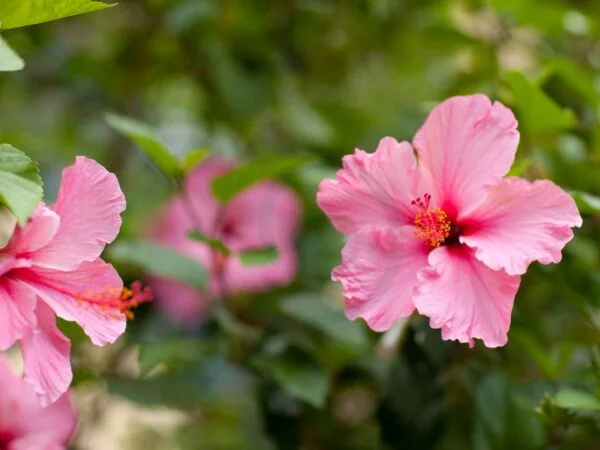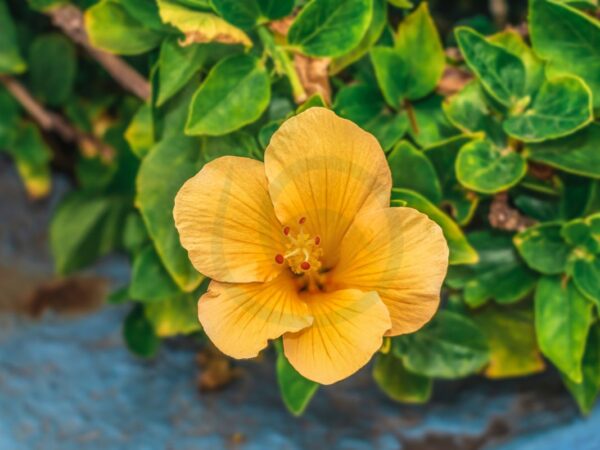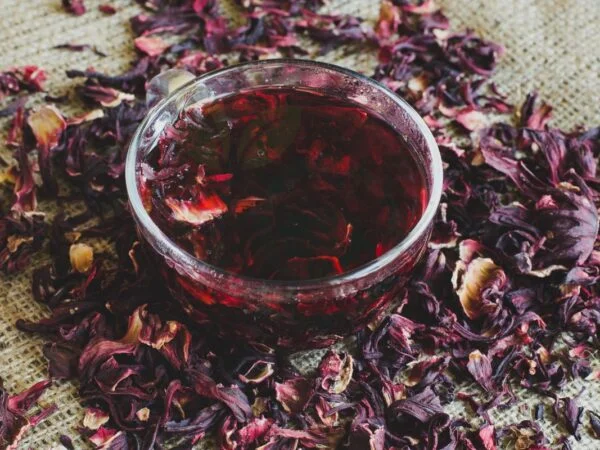Did you know that hibiscus plants can be successfully transplanted with a high success rate of over 90%? If you're looking to learn how to transplant a hibiscus and ensure its thriving growth, you've come to the right place.
Transplanting a hibiscus is a straightforward process that can significantly benefit the plant's health and overall appearance. In this comprehensive guide, we will walk you through the step-by-step instructions on how to transplant your hibiscus successfully. From preparing the new planting site to caring for your transplanted hibiscus post-relocation, we've got you covered with all the essential tips and tricks.
Ready to elevate your gardening skills and witness your hibiscus, a stressed plant, flourish in its new environment? Keep reading for expert insights and guidance on mastering the art of transplanting hibiscus plants like a pro.
Key Takeaways
-
Timing is Key: Decide on the right time to transplant your hibiscus based on the plant's growth cycle and weather conditions.
-
Prep for Success: Provide proper care before transplanting by watering the plant thoroughly a day before, ensuring a healthy root system.
-
Location Matters: Choose and prepare the new planting spot with well-draining soil and adequate sunlight for optimal growth.
-
Gentle Transition: Handle the uprooting process delicately to minimize shock to the plant's roots and overall health.
-
Pruning Precision: Trim back excess foliage to promote new growth and help the hibiscus thrive in its new environment.
-
Post-Transplant Care: Maintain consistent watering, monitor for signs of stress, and protect the plant from extreme conditions for successful acclimatization.
Deciding When to Transplant
Seasonal Timing
Fall
-
Choose fall for transplanting after hibiscus blooming.
-
Ensure establishment before freezing weather.
-
Consider the timing to avoid cold stress.
Spring
-
Optimal time for transplanting post-last freeze.
-
Better survival rate compared to fall transplants.
-
Risk of flower loss if transplanting delayed.
Plant Readiness
Prepare hibiscus a few days before transplanting. Reduce plant stress for successful transplantation. Ensure plant health and vigor before moving.
Environmental Factors
Consider sunlight, soil, and water needs. Evaluate the impact of overgrowth and erosion. Address soggy soil or root rot issues.
Pre-Transplant Care
TLC Days Ahead
Give extra care to your hibiscus plant by watering it in the days leading up to transplanting. This will help the plant adjust better to its new environment. Minimize any unnecessary stress on the plant by avoiding sudden changes.
Ensure that your hibiscus is ready for the move. Check for any signs of distress or disease and address them beforehand. Providing a healthy environment pre-transplant will set the stage for a successful transition.
Hydration
Water the soil thoroughly around the hibiscus before you start digging it out. Adequate water hydration is crucial for maintaining the plant's health during and after transplantation. Properly moistened soil makes it easier to extract the plant without damaging its roots.
After transplanting, continue to maintain proper hydration levels for your hibiscus. Monitor the soil moisture regularly and water as needed, ensuring that the plant receives adequate hydration to support root growth in its new location.
Avoid overwatering your hibiscus during the adjustment period post-transplant. While it's essential to keep the plant hydrated, excessive watering can lead to root rot and other issues. Strike a balance by providing enough water without drowning the roots.
Preparing the New Location
Selecting the Spot
Sunlight Exposure
-
Choose a new location with appropriate sunlight for your hibiscus plant.
-
Opt for full sun exposure for most hibiscus species to thrive and bloom well.
-
Ensure that tropical hibiscuses receive partial shade to prevent scorching.
Climate Consideration
-
Factor in the climate conditions of the new place to ensure successful transplantation.
-
Be mindful of seasonal changes and adjust care accordingly for optimal growth.
-
Make sure the hibiscus can adapt well to the new climate to prevent stress.
Soil Preparation
-
Prepare soil at the new location with proper drainage and acidity levels suitable for hibiscus plants.
-
Amend the soil by adding organic material like compost or peat moss to enhance hibiscus health.
-
Ensure that the soil is loose, well-draining, and rich in nutrients for optimal growth and development.
Uprooting Process
Digging Techniques
Proper digging techniques are crucial for successfully uprooting a hibiscus plant. Minimize root damage by digging carefully around the plant to extract the roots intact. Ensure a gradual and gentle excavation process to avoid harming the delicate root system.
Preserve the hibiscus roots during transplantation to promote healthy growth in the new location. By protecting the roots, you can minimize shock and stress on the plant, increasing its chances of thriving post-transplantation. A well-preserved root system is vital for the hibiscus to establish itself successfully in its new environment.
Root Preservation
Protecting the root system of the hibiscus is essential for ensuring its overall health during and after transplanting. Safeguarding the roots from damage helps in maintaining their integrity and functionality, aiding in the plant's adaptation to its new surroundings. Prioritizing root preservation is key to fostering a robust and flourishing hibiscus post-relocation.
When transplanting a hibiscus, remember that root health is paramount for its survival and growth. By focusing on preserving and nurturing the root system, you set the foundation for a thriving plant in its new home. Ensuring optimal root health enhances the hibiscus's ability to absorb nutrients and water efficiently, contributing to its overall well-being.
The Replanting Phase
Positioning the Hibiscus
When replanting a hibiscus, ensure to place it in a suitable location that receives adequate sunlight for healthy growth. Different hibiscus species have varied needs, so consider these when choosing the spot. Proper spacing between plants is crucial, as well as orienting them correctly for optimal growth.
Soil Refreshment
To promote successful transplanting, refresh the soil with organic amendments to provide essential nutrients for the hibiscus. Maintaining soil fertility is key to supporting healthy root development and overall plant growth. Ensure the soil is rich in nutrients to facilitate the establishment of the transplanted hibiscus.
Pruning for Success
Pruning Techniques
Trim foliage to reduce shock caused by transplanting, promoting the plant's adaptation to its new environment. Prune hibiscus before transplantation to encourage new growth and enhance overall plant vigor. Ensure proper pruning techniques are employed to maintain the plant's health and vitality.
Timing Pruning Right
Time pruning correctly to minimize stress on the hibiscus during the transplantation process. Prune the hibiscus at the right growth stage, typically before it enters an active growth phase. Ensure optimal timing for successful transplantation by coordinating pruning with the replanting phase.
Aftercare Essentials
Watering Guidelines
Hibiscus plants require deep watering immediately after being transplanted to help them establish in their new environment. It's crucial to follow a watering schedule for the next 4-6 weeks post-transplantation to ensure the plant receives adequate moisture without being overwatered. Avoid fertilizing the hibiscus right after transplanting as it can stress the plant.
Pest Management
After transplanting, it's essential to monitor the hibiscus for pests regularly. If any pests are detected, take immediate action by implementing pest control measures to prevent infestations that could harm the plant. By ensuring the hibiscus remains pest-free, you promote its overall health and growth.
Avoiding Common Mistakes
Overwatering
To avoid overwatering your hibiscus after transplanting, monitor soil moisture levels closely. Ensure the soil is damp but not waterlogged to protect the roots from rotting.
Ignoring Climate Needs
Consider the climate requirements of your hibiscus for optimal health post-transplant. Adjust your care routine based on the specific climate conditions to ensure that your hibiscus thrives in its new environment.
Transplanting into Containers
Pot Selection
When transplanting hibiscus, choose pots that are suitable for the plant's growth. Consider the pot size to accommodate the hibiscus roots and allow room for expansion. Opt for materials like plastic or terracotta that provide good insulation.
Ensure that the selected pots have proper drainage holes to prevent waterlogging, which can lead to root rot. Good drainage is essential for the health of the hibiscus plant as it allows excess water to escape, preventing soggy soil conditions that can harm the roots.
Potting Soil Mix
For successful hibiscus transplantation, use a potting soil mix that is well-suited for the plant's needs. Choose a mix that is well-draining to prevent water from pooling around the roots, which can cause root rot. Ensure that the soil mix is fertile and provides essential nutrients for healthy growth.
The optimal growing medium for hibiscus should be rich in organic matter and have good aeration to support root development. A balanced soil mix will promote strong growth and vibrant blooms in your transplanted hibiscus plant.
Long-Term Care and Observation
Growth Monitoring
After transplanting a hibiscus, monitor its growth closely. Watch for any signs of stress or disease. Ensure the plant is thriving in its new container.
Adjust your care routine based on seasonal changes. Hibiscus plants have different needs in varying seasons. Modify watering, fertilizing, and sunlight exposure to suit each season.
Summary
In summary, transplanting your hibiscus successfully requires careful planning, preparation, and execution. From deciding the right time for transplanting to providing proper aftercare, each step plays a crucial role in ensuring the health and growth of your plant. By following the guidelines outlined in this article, you can confidently navigate the transplanting process and set your hibiscus up for long-term success. Remember, attention to detail and consistency in care are key to a thriving hibiscus in its new environment.
oll up your sleeves, gather your tools, and get ready to give your hibiscus a fresh start. Your efforts will be rewarded with vibrant blooms and lush foliage that will beautify your garden for seasons to come. Happy planting!
Frequently Asked Questions
How do I know when it's the right time to transplant my hibiscus?
Transplant your hibiscus in early spring before new growth appears for the best results. This timing allows the plant to establish itself in the new location before the growing season.
What care should I provide before starting the transplant process?
Ensure your hibiscus is well-watered a day or two before transplanting to reduce stress on the plant. Trim back any dead or overgrown branches to promote healthy growth post-transplant.
What are the essential steps for preparing the new location for transplanting?
Choose a spot with well-draining soil and adequate sunlight for your hibiscus. Dig a hole twice as wide as the root ball and mix in compost for added nutrients.
How should I uproot my hibiscus without causing damage?
Dig around the plant's drip line to loosen the roots gently. Lift the plant by its root ball, avoiding excessive shaking or damage to the roots during the uprooting process.
What should I keep in mind during the replanting phase of my hibiscus?
Place your hibiscus in the center of the prepared hole at the same depth as it was previously planted. Backfill with soil, water thoroughly, and add mulch around the base for moisture retention.
Are there specific pruning techniques that can help ensure successful transplantation?
Trim back one-third of the top growth to reduce stress on your hibiscus post-transplant. Focus on removing dead or damaged branches to encourage new growth and overall plant health.
What are some key aftercare practices I need to follow after transplanting my hibiscus?
Water your hibiscus regularly, especially during dry spells, to help it establish in its new location. Monitor for signs of stress or wilting and provide additional care if needed for optimal recovery.
Image Source: Paid image from CANVA




